Did Briartek “invent” two-way distress beacons?
I really enjoyed being part of Trawler Fest last week. It was inspiring to meet relatively new cruising enthusiasts who are working to expand their skill sets, and trying to explain and demonstrate current technologies rekindled some of my own enthusiasms. I hadn’t turned on the DeLorme inReach in months, for instance, but it located itself and paired with my iPad for easy backup navigation, tracking, and two-way messaging no problem, even though I was standing in front of an audience under a large aluminum-framed tent. Plus I got to see the entirely new User and Map Share web pages DeLorme recently developed for inReach, and they are sharp. However, I was also reminded of a disturbing behind-the-scenes patent issue that may hobble all SENDs (Satellite Emergency Notification Devices) and will likely tax consumers no matter what happens in court…
I’m certainly no expert on U.S. patent law, but I have a sense that the situation I’m about to describe is an abuse of the system. And I further suspect that no matter how frivolous it may be, it’s going to cost all of us who’d like to benefit from a “Global Bidirectional Locator Beacon and Emergency Communications System” as it’s phrased in the patent below. The Patent was filed by BriarTek Inc. in 2007 and awarded in 2011 — you can download the complete PDF file here — and it seems to claim general invention rights for valuable safety, tracking, and messaging devices like the DeLorme inReach, the YellowBrick3, and BriarTek’s own Cerberus. I say “seems” because the language of the patent strikes me as highly stilted and the illustrations look like they were drawn by a five-year-old. Was this done to confuse the patent office?
At any rate, BriarTek demanded a license fee from the other developers, DeLorme apparently refused because it feels the patent is invalid, and so last August BriarTek petitioned the U.S. International Trade Commission (ITC) to stop DeLorme from importing the inReach (from its foreign contract manufacturer). If the ITC agrees, you won’t be able to buy an inReach in the U.S.!
I learned about this litigation last September, but hesitated to write about it for two reasons. The first is because I’m such a fan of the inReach specifically — my cruising experience discussed here — and the whole SEND concept (which I discussed here); I was hopeful that this patent issue was just a little bump in the road and that there was no reason to confuse a new technology niche by publicizing a temporary problem. Plus DeLorme had just started advertising on Panbo and I know that some folks think that means more about Panbo content than it ever actually does. So let me be perfectly clear: DeLorme did not tell me about this issue, let alone ask me to write about it; in fact, they politely decline to answer any questions about the patent dispute and may not appreciate this entry, which they don’t know about yet.
I learned about the Briartek patent from a Panbo comment written by Marius Coomans, who also wrote about it on his Track & SEND blog. I recommend that you first read Marius’ Patent Bombshell entry and then Doug Ritter’s longer source piece on his Equipped to Survive site.
Doug Ritter is not only an independent and expert journalist covering safety devices but also an active member of the RTCM which established the SEND standard. Moreover, I asked BriarTek’s Joe Landa if there was anything inaccurate in Ritter’s report and all that Landa came back with is that the Cerberus device is more available than Ritter originally described (an assertion that Doug later put in an update). Availability is important because the ITC case is not directly involved with the patent’s validity but rather with the effect on consumer safety if the inReach is banned. You’ll also learn from Doug that BriarTek had to recently argue that its patent is “not essential” to building a SEND to the RTCM standard — even though it sure looks like it is — because otherwise the RTCM might cancel the standard as it has a policy against standards that are dependent on patented IP. Mind you that BriarTek representatives helped to write that SEND standard, apparently without mentioning their licensing intent; Ritter hints at sore feelings.
So I defer to Doug’s excellent and possibly restrained reporting on this issue, and maybe that gives me the room to express my personal opinion that the patent is ridiculous. To me, the idea of including two-way satellite messaging in a safety device is darn obvious and has been for a long time. I think of the Satamatics Inmarsat D+ tracker/remote control I tested in early 2006, the 2007’s MOB Guardian, and the MatysOnBoard Iridium communicator I first saw in 2008 (but which had already been long in development). The SPOT Satellite Messenger showed up in 2007 and while it’s one-way only, that’s always been its obvious weakness. So when I first heard of Iridium’s little 9602 SBD modem in 2009, they were pushing its two-way capabilities and how it could be used in all sorts of third party SEND and other devices. Iridium did not mention that another company had applied for a broad patent over what the 9602 could do and I think it’s because they had no idea that such a patent was possible or in the works.
But perhaps I’m naive. Is BriarTek’s patent actually legitimate? I know a lot of Panbo readers have some experience in these matters and I’d love to hear opinions. When I tried the inReach again last weekend, I didn’t like thinking about a possible ban, let alone how much money the company has had to spend litigating this matter, which has to come out of inReach revenues eventually (i.e. our pockets). Will this be just a little bump in the road? And if you’re not interested in the patent issue, you might still enjoy checking out my new inReach Share Map; both the test unit and myself are on board Gizmo and activated so feel free to try messaging me.
PS 11/20/2014: Yesterday U.S. District Judge Leonie M. Brinkema ruled that Briartek did not invent two-way Satellite Emergency Distress Devices (SEND’s), and the ruling (viewable here) seems quite definitive to me. I’m not a lawyer but what the Judge seems to be saying in the last paragraph and footnote below (underlining mine) is that she didn’t even need to address some of DeLorme’s secondary arguments because their primary argument that BriarTek’s patent claims were invalid was so solid. This seems like a big win for DeLorme, other SEND’s manufacturers and all of us who may use a SEND one day.


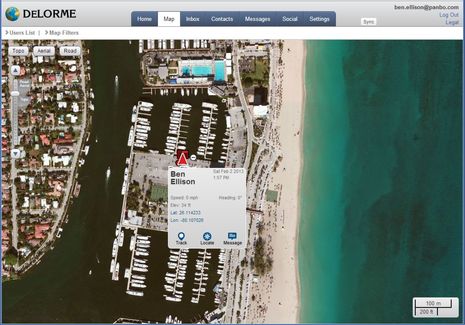
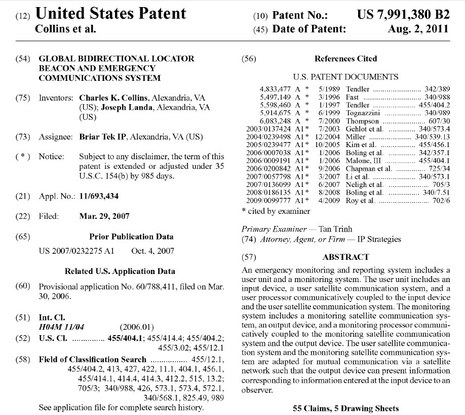

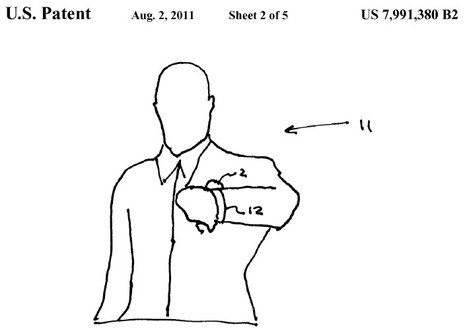
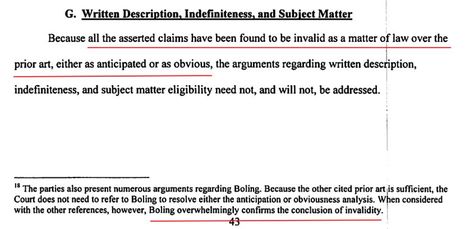

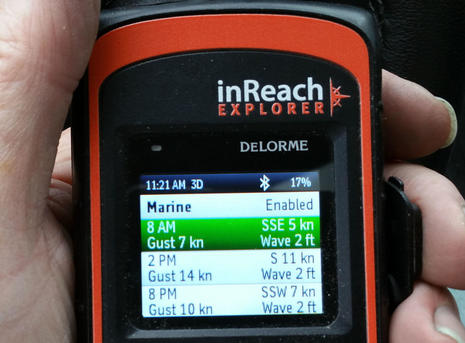
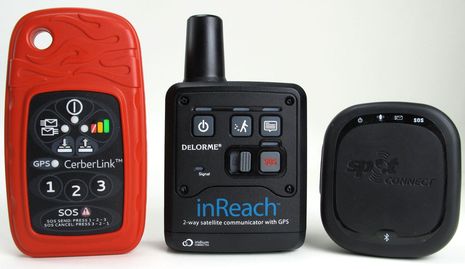








Not an IP lawyer but my wife is managing partner at her firm which specializes in obtaining patents for inventors especially in marine and subsea technologies. I can tell you that she would never allow drawings like the one in this patent to go out in one of her applications.
A very interesting story to be sure and one that I will follow. But do think that Briartek were less than honorable and should have disclosed to the standards committee that they had IP in process that would impair the adoption of the standard.
I once was on the board of a major standards organization. Nondisclosure of essential patents is a abuse of the system that never goes away. It is called “patent ambush.” Today standards participants typically must submit letters that make it harder to profit from such behavior. Also, the US FTC has a history of stepping in to defend the standards process.
A very important case in this area was decided in 2007, the same year the BriarTek patent was applied for. If you are interested in this stuff, you might Google “Lessons from RAMBUS”. It will return several plain language summaries of the case explaining how that case impacts patent ambush.
Back when I ran a product development organization we received patent infringement claims roughly monthly. Our lawyers made the vast majority of them go away. Those lawyers were simply a cost of doing business in the US market.
Thanks, Craig! I think I found which “Lessons of RAMBUS” you meant here:
http://www.iptoday.com/pdf/2007/6/Dunlavey_Schallop-June2007.pdf
and it’s very interesting stuff. But let me note that Doug Ritter’s report includes a claim by BriarTek’s Joe Landa that he advised the RTCM “that we had pending patents in this area…” But Ritter also reports that he couldn’t find anyone on the RTCM committee (SC128) who remembers such a statement and also that:
“The consensus of those SC128 members I spoke with, who declined to be quoted on the record, is that Landa chose to not disclose a pending patent that could potentially affect many SEND manufacturers while he participated in developing a standard with many of those same manufacturers that could thereby enrich his company if he was awarded the patent and the patent is found to be valid.”
Incidentally, I don’t think I made it clear in the entry, but I’ve been following the work of Doug Ritter for years and I hold him in high regard for integrity and accurate reporting.
Welcome to the good old USA where the patent system is broken for fair. These trolls abound in the computer industry and are costing this country both in escalating product cost, and stifling innovation. A quick introduction to the problem can be found on scanning the website:
en.wikipedia.org/wiki/Groklaw
This blog started when a bunch of salesmen in Utah filed a case against IBM et al. claiming to own the patents on UNIX and therefore LINUX. There is not room here for me to outline the problem or solutions in depth, but I will report to you that you are being scammed.
IBM is the largest patent filer in the world, (6000+ last year). If asked they will cross license for a nominal fee, and never take anyone to court on an infringement. But if you file against them…they will put you under, hence they don’t have a problem.
Doug – don’t mean to quibble but the IBM/SCO/Novell lawsuits were based on claimed copyrights on the UNIX code base and not patents. Copyrights are a lot easier to obtain (you can do it yourself for a nominal filing fee) and don’t carry the enforcement of patents. The claims of copyright infringement were BS and eventually that lawsuit came out with the right decision.
Ben, thanks for taking up this issue (and giving me some link juice). It’s sad that a really worthwhile effort to “re-invent” the PLB has been stymied by this patent bomb.
I totally admire inReach’s stance in this. Is there any word on Iridium’s response? Their latest satellite phones are impacted by this patent. Yellow brick settled with the “devil”, but they were never associated with the formal SEND effort and only do limited business in the USA. This patent has no effect on non-US markets. Unfortunately, without active participation by US companies, the SEND standard will die.
Oh my. The diagrams may deserve some criticism but the overall patent application is very well constructed, actually one of the five best I have ever read.
But is there prior art?
What is an emergency? What is an emergency monitoring system? So what the wireless transceiver is installed miles rather than meters above the ground.
What is an emergency? In the 1980’s was a mainframe failure an emergency? Is a request from a pilot in an airplane in flight an emergency? Is a submarine in distress an emergency? Do not all three situations have 2-way text based wireless communication? Does the first two way pager (Skypager?) or the original RIM blackberry seem familiar when reading this patent? They covered emergencies (and non emergencies), just using a different frequency.
Is it unique enough this patent uses a satellite to reach people out of reach of a cell phone? Isn’t a satellite just a transceiver with solar panels up in the sky, rather than on the ground? There are other transmitters that reach great distances, such as those used to communicate to submarines anywhere in the world.
Perhaps something close enough was invented before this patent was filed, such invention may not even be patent protected, and this patent will fall.
Can anyone think of something very specific and write it here?
I remember the Orbcomm communicator which was available in 1998. It did 2-way text messaging via the Orbcomm LEO satellites. Not an emergency only device but it had GPS and could still call in the cavalry.
Built by Magellan as the GSC100
http://www.spacedaily.com/news/orbcomm-98q.html
http://www.telcomwireless.com/globalcom.htm
Thanks, Derek! And now that my memory is jogged I recall the SkyMate system I first tried in 2003.
http://pmy.prod.aimstaging.com/node/146203
I think that Orbcomm had to stay away from distress messaging because of the lag sometimes seen in their system, but certainly their technology is another good example of why the value and possibility two-way distress messaging has been obvious for a long time. Lawyers please note 😉
Derek replied offline and noted that: “Yes the Skymate system is still alive and well. We still have this system (Actually the Skymate 100 version) and sell quite a few to cruisers going offshore, either back to Europe or out through the canal.”
http://www.skymatewireless.com/
Ham radio has been involved with 2 way mobile satellite emergency communications since 1961 via OSCAR & AMSAT.
Science and Science Fiction writer Arthur C Clarke had satellites used for two way emergancy communication in his 1967 short story “The Cruel Sky”. In the story it was used by two people who got
into trouble climbing Everest.
The ridiculous-seeming Briartek patent claim is still causing pain. DeLorme just got fined 6.2 million dollars by the International Trade Commission, whose job does NOT include examining the validity of the patent:
http://www.pressherald.com/2014/06/10/delorme-publishing-fined-6-2-million-in-patent-infringement-case/
Meanwhile Amazon apparently got a patent on “Photography Against A White Background”:
https://www.techdirt.com/articles/20140507/04102327144/us-patent-office-grants-photography-against-white-background-patent-to-amazon.shtml
It seems insane that obvious ideas like studio photograpy or a two-way distress satellite handheld would be approved by the U.S. Patent Office, but here’s more detail on how this is happening:
https://www.techdirt.com/articles/20140610/18021227542/amazon-got-photography-against-white-background-patent-because-cafc-says-obvious-ideas-must-be-written-down.shtml
Glad to report that Portland Press Herald reporter Whit Richardson is digging deeper into the Briartek/DeLorme issue and has found folks with opinions like Doug Ritter and myself:
http://www.pressherald.com/?s=delorme
I was also cheered to find this entry on a blog maintained by DeLorme’s IP attorneys:
http://ipwise.wordpress.com/2014/05/19/fed-up/
Patent abuse is a huge problem and we need to rally around companies that stand up to the predators.
Amen
Excellent news!
Yesterday U.S. District Judge Leonie M. Brinkema found all of Briartek’s patent claims “…invalid as a matter of law over the prior art, either as anticipated or as obvious…”
The entire opinion can be viewed or downloaded here:
https://delorme.sharefile.com/download.aspx?id=s2b9ce8e8a984dff8
It’s hard reading but one line that stood out to me is:
“It would have been clear to even a layperson that sending customized detailed messages allow for more robust communication.”
Well done, Judge Brinkema, and congratulations to DeLorme for fighting to the end. This great news for everyone who developes and may use a SEND (Satellite Emergency Notification Device).